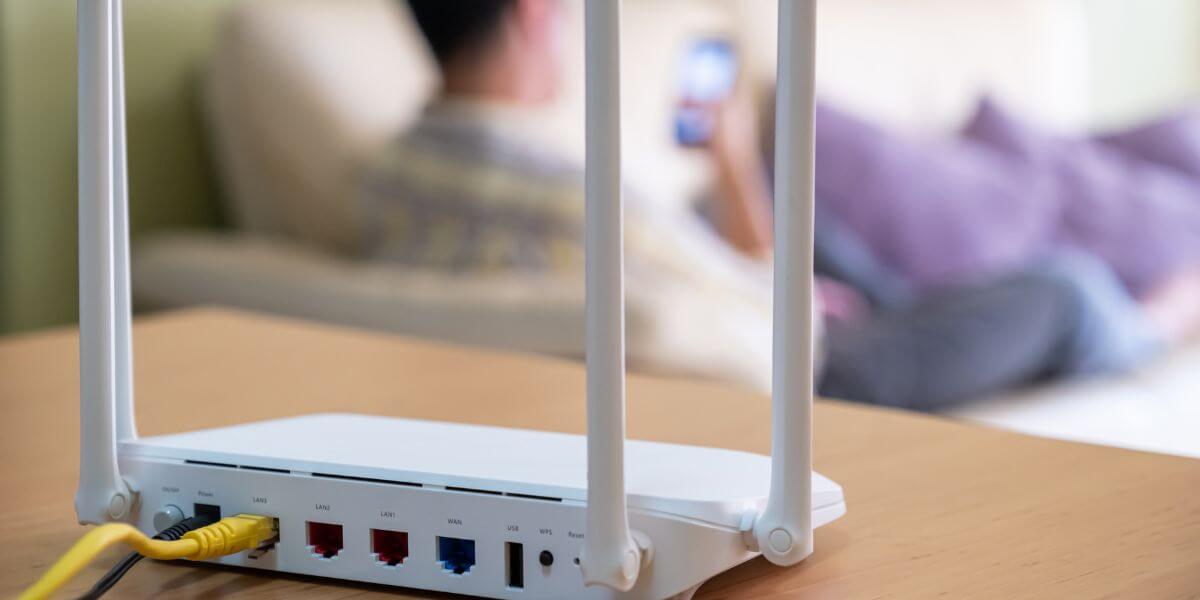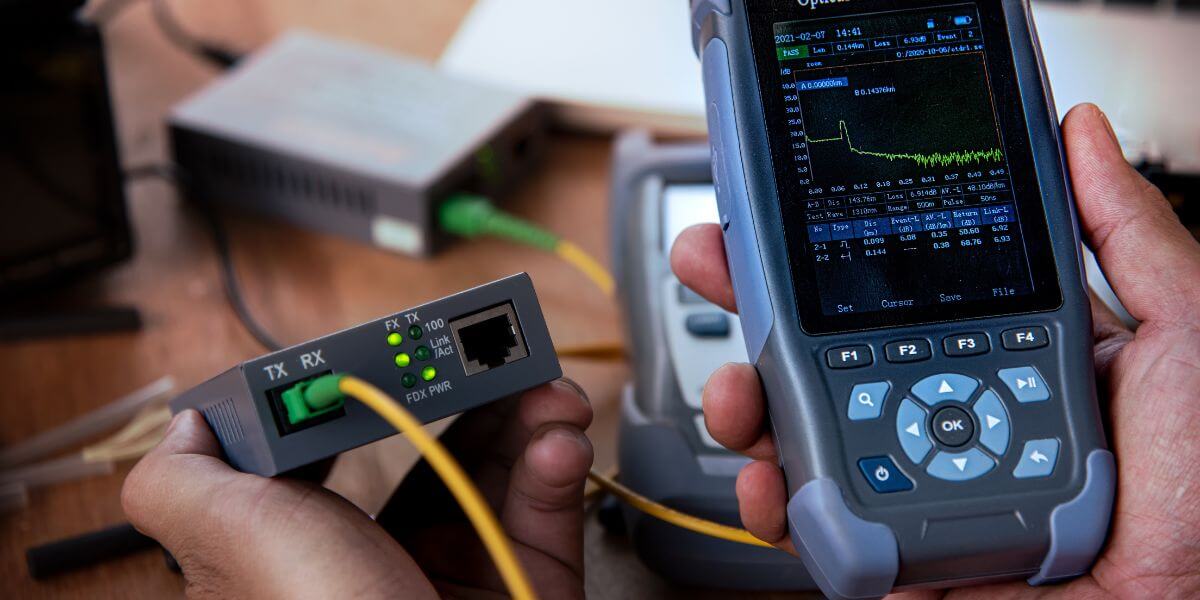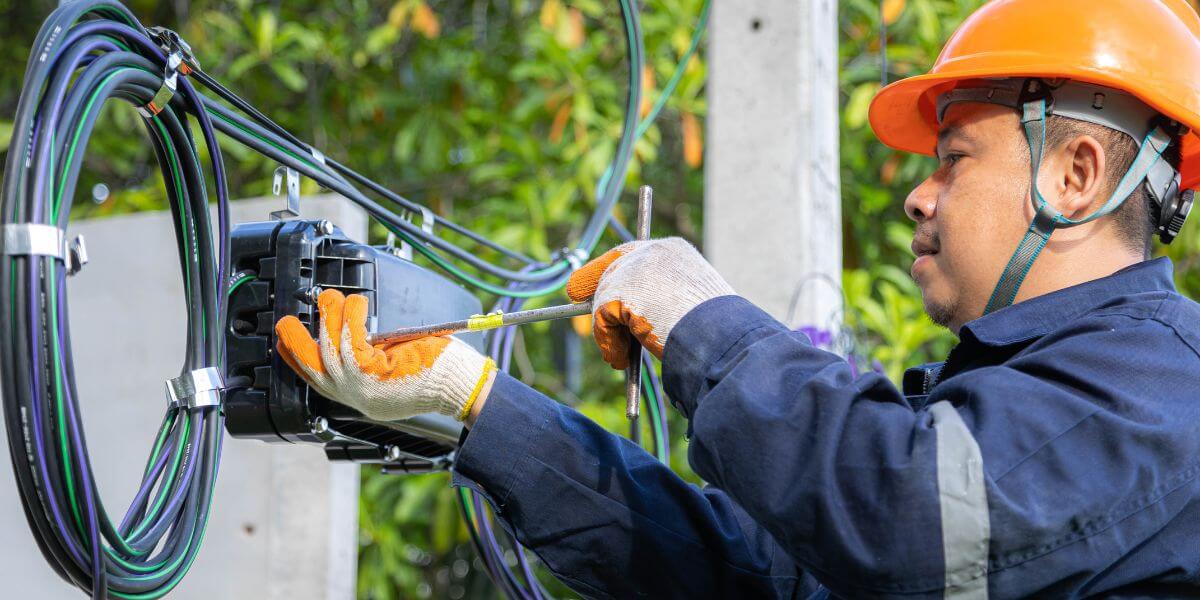Fiber Internet Equipment: Routers, ONTs, and What You Need to Know
Table of Contents
Making the switch to fiber internet offers a significant upgrade in speed and reliability, but understanding the equipment requirements can feel overwhelming. Whether you’re comparing internet providers or preparing for installation, knowing what hardware you’ll need helps ensure a smooth transition from cable to fiber-optic service.
Unlike traditional cable connections, fiber internet equipment uses advanced technology to deliver lightning-fast speeds through thin glass fibers that transmit data as pulses of light. This guide breaks down everything you need to know about fiber routers, ONT fiber equipment, and other essential components to help you make informed decisions when you compare internet plans.
Understanding the Difference Between Fiber and Cable Equipment
The fundamental distinction between fiber and cable internet lies in how data travels to your home. Cable internet uses copper coaxial cables to transmit electrical signals, while fiber-optic technology sends information through hair-thin glass fibers using light pulses. This difference in transmission methods requires specialized equipment designed to handle fiber’s superior capabilities.
When you compare internet providers, you’ll notice that fiber services can deliver symmetrical upload and download speeds, often reaching 1 Gbps or higher. Traditional cable internet equipment simply cannot match these performance levels due to the physical limitations of copper wiring. Additionally, fiber connections resist interference from electrical signals and weather conditions, providing more consistent service throughout the day.
The equipment needed for fiber internet shares some similarities with cable setups, but key components work differently. Your existing cable modem won’t work with fiber service, and you’ll need devices specifically engineered to convert optical signals into data your devices can use.
Essential Fiber Internet Equipment Components
Fiber internet relies on specialized equipment to deliver its high-speed, reliable performance.
Optical Network Terminal (ONT): Your Fiber Connection Hub
The Optical Network Terminal serves as the cornerstone of your fiber internet equipment setup [1]. Often called a fiber modem by customers, the ONT performs a similar function to traditional modems but operates on entirely different principles. Instead of modulating and demodulating analog signals like cable modems, ONTs convert light pulses traveling through fiber-optic cables into electrical signals your home network can utilize.
Most internet providers install the ONT during professional installation, mounting it either inside your home or in a weatherproof enclosure outside. The device connects directly to the fiber-optic line running to your property and requires a power source to operate. ONTs are compact, typically measuring about the size of a hardcover book, and include LED indicators showing power, connection status, and data transmission activity.
When evaluating internet prices and installation costs, remember that the ONT remains the property of your internet provider in most cases. This arrangement benefits customers since providers handle maintenance, replacements, and upgrades as technology advances.
Fiber Routers: Broadcasting Your High-Speed Connection
A quality fiber router is the second critical component in your equipment lineup. While the ONT establishes your fiber connection, the router broadcasts that signal throughout your home via WiFi and provides wired ethernet ports for direct device connections. Not all routers can handle fiber internet’s blazing speeds, making it essential to choose equipment rated for your plan’s maximum throughput.
Modern fiber routers incorporate advanced features like WiFi 6 or WiFi 7 technology, delivering faster wireless speeds, better device handling, and improved coverage compared to older standards. When you compare internet plans offering gigabit speeds or higher, ensure your router supports these capabilities to avoid creating a bottleneck in your home network.
Many of the best internet providers offer branded routers optimized for their services, though you can also purchase your own compatible equipment. Third-party routers often provide more customization options and advanced features, but require more technical knowledge to configure properly. Consider factors like home size, number of connected devices, and specific use cases when selecting your fiber router.
WiFi Extenders and Mesh Systems: Eliminating Dead Zones
Even with fiber internet’s superior performance, physical obstacles and distance can create WiFi dead zones in larger homes. WiFi extenders and mesh network systems solve this problem by amplifying and redistributing your router’s signal to reach every corner of your property.
Traditional WiFi extenders capture your router’s signal and rebroadcast it, effectively doubling the coverage area. However, this method can reduce speeds since devices must communicate through the extender to reach the main router. Mesh WiFi systems offer a more elegant solution, creating a unified network where multiple nodes work together seamlessly. Your devices automatically connect to the strongest signal as you move throughout your home.
When comparing internet providers and their equipment packages, ask about whole-home WiFi solutions. Many companies now bundle mesh systems with their service plans, ensuring optimal coverage without additional equipment purchases.

Ethernet Cables: Maximizing Your Fiber Connection
While WiFi offers convenience, ethernet cables deliver the full potential of your fiber internet equipment directly to compatible devices. Gaming consoles, desktop computers, and streaming devices benefit from the stable, low-latency connections that wired networking provides. Even the best wireless technology cannot match ethernet’s consistency and speed.
Fiber installations typically use Cat5e or Cat6 ethernet cables, both capable of handling gigabit speeds over considerable distances. Cat6 cables offer better shielding against interference and support higher frequencies, making them ideal for future-proofing your setup. Consider running ethernet to stationary devices like smart TVs, gaming systems, and home office equipment to maximize performance while reserving WiFi for mobile devices.
Choosing Compatible Equipment for Your Needs
Selecting the right equipment is essential for ensuring a seamless and efficient home network setup.
Router Specifications and Features
When selecting a fiber router, several key specifications determine compatibility and performance. Look for routers supporting your plan’s maximum speeds. A router rated for 1 Gbps won’t fully utilize a 2 Gbps fiber connection. WiFi standards also matter significantly, with WiFi 6 (802.11ax) and WiFi 7 (802.11be) offering substantial improvements over older protocols [2].
Advanced features to consider include Quality of Service (QoS) settings for prioritizing specific devices or applications, multiple bands for reducing network congestion, and robust security protocols. Gaming households should prioritize routers with low latency and traffic management capabilities, while remote workers benefit from reliable VPN support and consistent performance during video calls.
Understanding Internet Comparison Factors
When you compare internet providers and their equipment offerings, evaluate the total value proposition beyond just internet prices. Some providers include professional installation, ongoing equipment support, and automatic upgrades when new technology becomes available. Others charge equipment rental fees but handle all maintenance and replacements.
Consider long-term costs when deciding between provider equipment and purchasing your own. While buying a high-quality fiber router requires upfront investment, it eliminates monthly rental fees and gives you full control over your network configuration. However, remember that technology evolves rapidly, and provider-supplied equipment often receives automatic updates and replacements as standards advance.

Installation and Setup Best Practices
Professional technicians handle ONT installation since it requires specialized tools and expertise to properly connect fiber-optic cables. However, router setup often falls to customers, especially when using personal equipment. Start by positioning your router centrally, elevated, and away from obstacles or interference sources like microwaves and baby monitors.
During initial configuration, change default passwords, update firmware, and enable WPA3 security if available. Create separate networks for guests and smart home devices to improve security and network performance. Many modern routers include smartphone apps that simplify setup and ongoing management.
For optimal performance, consider your home’s layout when placing equipment. Fiber routers perform best in open areas where signals can propagate freely. Avoid closets, cabinets, or locations near large metal objects that can interfere with wireless signals. If running ethernet cables, plan routes that avoid high-traffic areas while reaching key devices.
Troubleshooting Common Equipment Issues
Even the best internet in your area occasionally experiences issues. Understanding basic troubleshooting helps resolve problems quickly without waiting for technical support. Start with simple solutions like power cycling your equipment: unplug the ONT and router for 30 seconds before reconnecting.
Check all cable connections, ensuring ethernet cables click securely into ports and fiber connections remain undisturbed. The ONT’s status lights provide valuable diagnostic information, with most models using green lights to indicate normal operation and red or amber for problems. Document your equipment’s normal light patterns for easier troubleshooting.
If wireless devices struggle while wired connections work properly, focus on router settings and placement. Update router firmware, verify WiFi passwords, and check for interference from neighboring networks. Many routers include diagnostic tools that identify channel congestion and suggest optimal settings.

Future-Proofing Your Fiber Setup
Technology advances rapidly, making future-proofing an important consideration when investing in fiber internet equipment. Choose routers supporting the latest WiFi standards and multiple gigabit ethernet ports. Even if your current plan doesn’t utilize these capabilities, having compatible equipment simplifies future upgrades.
Consider smart home growth when planning your network. With the rapid growth of connected devices, routers equipped with powerful processors and advanced device management capabilities are becoming more essential than ever. Mesh systems offer excellent scalability, allowing you to add nodes as coverage needs expand.
Finally, when you compare internet plans, ask providers about their equipment upgrade policies. Some companies automatically update customer equipment as new standards emerge, while others require manual upgrades or equipment swaps. Being familiar with these policies helps plan for long-term service satisfaction.
Frequently Asked Questions
Do I need special equipment for fiber internet installation?
Yes, fiber internet requires specific equipment including an Optical Network Terminal (ONT) and a compatible router. The ONT converts fiber-optic light signals into electrical signals your devices can use. Your internet provider typically supplies and installs the ONT, while you can use provider equipment or purchase your own compatible fiber router.
Can I use my existing cable internet router with fiber service?
In most cases, your cable internet router will work with fiber service, but you may not achieve optimal speeds. Cable routers often lack the processing power and WiFi standards needed to fully utilize fiber’s capabilities. For best results, upgrade to a router specifically designed for high-speed fiber connections, particularly if your plan exceeds 500 Mbps.
What’s the difference between an ONT and a modem?
While both devices connect your home to the internet, they work differently. Traditional modems convert analog signals from cable or DSL lines into digital data. ONTs specifically handle fiber-optic connections, converting light pulses into electrical signals. Unlike modems, ONTs don’t modulate or demodulate signals. They perform optical-to-electrical conversion, making them essential for fiber internet service.
How much should I budget for fiber internet equipment?
Equipment costs vary significantly based on whether you rent or buy. Most providers charge $10-$15 monthly for equipment rental, including the ONT and router. Purchasing your own router ranges from $100-$400 depending on features and performance. While buying equipment requires upfront investment, it eliminates rental fees and provides more control over your network configuration.
Sources
[1] Neos Networks. “What is an optical network terminal (ONT)?"
[2] Netgear. “Why am I not getting the maximum speed that my router is capable of?"
